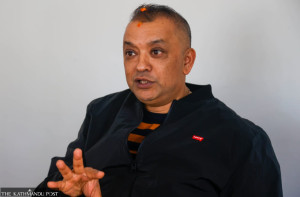Money
The industry will not advance without skilled human capital
Pressure for rapid expansion, expectations of quick returns and inorganic growth coupled with intentional ignorance of human capital investment has led to the knowledge and skill deficit in the industry
The history of modern banking in Nepal actually started in the mid-1980s with the inception of Nabil Bank as the very first joint venture bank. Within the next two years, two more joint venture banks, Indosuez Bank and Grindlays Bank, came into the picture. These multinational banks changed the banking landscape for both entrepreneurs and those aspiring to make a career in banking. They were proactive in tapping locally available top talents and converting them into a skilled workforce of global standards. This is evidenced by the fact that many of today’s banking leaders were in the payroll of one of these multinational banks at a certain point in their banking career.
A structured recruitment process, systematic orientation programmes on boarding and rigorous training interventions were the key attributes which helped these early multinational banks to develop seasoned talents for the industry. However, things changed post 2000 when more locally promoted banks came into the picture. In the current scenario, lack of skilled and knowledgeable human capital in banking at all levels has been a major challenge for the industry. This is due to rampant growth of the industry motivated mainly by short-term profitability and lack of long-term vision.
Pressure for rapid expansion, expectations of quick returns and inorganic growth coupled with intentional ignorance of human capital investment has led to the knowledge and skill deficit in the industry. This has not only impacted core functional areas and made them prone to risk but also placed inexperienced hands who lack maturity in terms of strategic thinking, analytical skills and visionary leadership in leadership roles.
Unfortunately, the earlier practice of strategic recruitment, structured orientation on boarding and rigorous training interventions to develop quality human capital seems to have been abandoned by all classes in the industry.
Variation in knowledge of banking basics among board members has led to the setting of tall orders for the management to achieve, and this does not look like a rational decision. This tendency has put pressure on management to focus on short-term returns whereas priority should also have been accorded to long-term sustainability, succession planning and talent development.
Succession planning is even more critical at top level executive roles, particularly that of the CEO and other line managerial roles. The absence of succession planning holds an organization back as the resulting transition gap slows down its progress.
Even till date, most banks including those in the billionaires’ club invest less than 1 percent of the total employee cost in training and development as against the international norm of 5-7 percent. The central bank has intervened through its recent monetary policy and made it mandatory for banks and financial institutions (BFIs) to set aside 3 percent of the total employee cost under this head. Thus, it is expected that BFIs will take visionary steps towards this end.
The non-banking corporate sector is even way behind with regard to training intervention. Barring a few exceptions, this is almost non-existent in many family-owned enterprises and business houses. Management trainee (MT) recruitment is one classic example in Nepal’s corporate sector. The whole idea of recruiting MTs is to prepare future leadership cadre and create a pool for succession planning. However, a quick glance reveals that most MTs are not given a conducive environment to grow and develop. A very few get opportunities for strategic interventions such as strategy development, risk management, leadership and financial analysis skills.
BFIs should capitalize on the regulator’s intervention which has required them to invest a reasonable amount in human capital development. As a start, the ideal move would be to reinforce the human resource (HR) department and upgrade the HR head position to that of at least deputy general manager or assistant general manager level under which separate divisions such as talent acquisition (recruitment/hiring), compensation and benefits (C&B) and talent & development (T&D) among others should be created. This structure is ideally suited for commercial banks with a staff size of 600 plus as it would also justify their investment.
The increased capital will certainly exert target pressure on BFIs of every size and shape. The expectation of return on investment will thus increase even more due to the enhanced capital. Now is the right time to initiate structured human capital development through structured recruitment, orientation on boarding and rigorous training interventions for newcomers and devise a career growth plan for the existing human capital through capacity development programmes such as training, certification in different verticals including long-term management and leadership development. These interventions are expected to take the industry to the next level of stability and sustainability, thus ensuring healthy and progressive growth for stakeholders.
The bottom line is that without skilled human capital, the industry will not move forward. The capacity building initiatives currently in practice put the sustainability of organizations under question. Thus, the goal is to continue performing at a respectable level, ensure a healthy return on investments, ensure proper compliance and governance, create new lines of business through innovations and technology interventions and increase efficiency and productivity. This can be achieved only through regular investment in human capital.
(Subba is CEO of National Banking Institute)




 9.12°C Kathmandu
9.12°C Kathmandu














